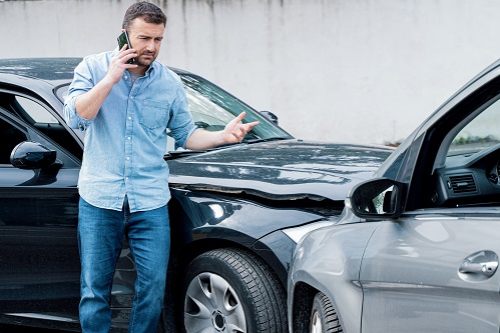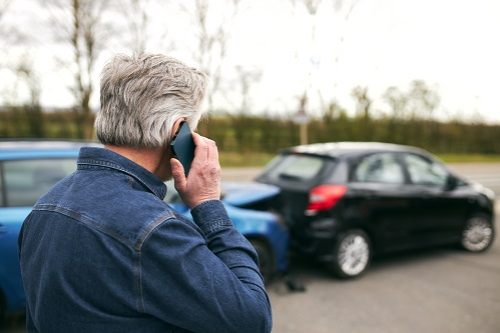What are the different coverages which cover repairs?
Collision coverage
Collision coverage is a type of car insurance that helps pay for repairs to your vehicle if it is damaged in a collision with another car or object, regardless of who is at fault. For example, if you rear-end another car or collide with a stationary object like a tree or lamppost, collision coverageCollision coverage helps pay for repairs or replacement of your car if it's damaged in an accident, regardless of who is at fault and is subject to a deductible. will come into play to cover the repair costs of your vehicle. Remember that you will typically be required to pay a deductibleThe deductible is the amount you pay out of pocket for a covered loss when you file a claim. before the insurance coverage kicks in.
Comprehensive coverage
Comprehensive coverage protects your vehicle against non-collision incidents such as theft, vandalism, natural disasters, and falling objects. When it comes to repairs, comprehensive coverageComprehensive coverage helps pay for damage to your car caused by events other than a collision, such as theft, fire, vandalism, or natural disasters. It is subject to a deductible. can be a lifesaver. If your car sustains damage from a hailstorm, flood, or fire, or if it's vandalized, comprehensive coverage will help cover the repair expenses. Like collision coverage, you will have to pay a deductible as agreed upon in your policy.
Exclusions and limitations
While car insurance covers repairs for a wide range of scenarios, it's best to be aware of specific exclusionsItems that are specifically denied coverage under the terms of an insurance policy. For example, most auto insurance policies exclude coverage for normal wear and tear, drag racing and intentional acts. and limitations that may apply.They include:
- Regular wear and tear: Car insurance does not cover regular wear and tear of your vehicle. Repairs due to aging, mechanical breakdowns, or maintenance issues are typically not covered.
- Intentional damage: Deliberate acts that cause damage to your vehicle, such as intentionally crashing your car, will not be covered.
- Racing or off-road use: If your vehicle sustains damage while racing or being used off-road, it may not be covered by your standard car insurance policy.
- Uninsured motorist: If you are involved in an accident with an uninsured or underinsured driver and are at fault, their insurance (if any) may not be sufficient to cover all repair costs. In such cases, you may need uninsured/underinsured motorist coverage to help with the expenses.
Does liability coverage pay for repairs?
No, liability coverage does not pay for repairs to your vehicle. Liability coverage is designed to protect you financially if you cause an accident and are deemed legally responsible for injuries or property damage to others. It helps cover the costs of the other party's medical bills, property damage, and legal expenses.
If you want coverage for repairs to your vehicle, you would need to purchase additional coverage, such as collision coverage or comprehensive coverage. It's essential to review your insurance policy and understand the different types of coverage to ensure you have the protection you need in various scenarios.
What other options do I have to help protect my car from expensive repairs?
Apart from collision and comprehensive coverage, there are several other options you can consider to help protect your car and avoid expensive repairs:
- Uninsured/Underinsured motorist coverage - This coverage protects you if you're involved in an accident with a driver who doesn't have insurance or doesn't have enough insurance to cover the damages. It can help pay for medical bills and property damage in such scenarios.
- Personal injury protection (PIP) or medical payments coverage - PIP and medical payments coverage can help cover your medical expenses and those of your passengers in case of an accident, regardless of who is at fault.
- Gap insurance - If you have a leased or financed vehicle, gap insurance can be beneficial. It covers the difference between the actual cash value of your car and the amount you owe on your lease or loan if your car is totaled or stolen.
- Towing and roadside assistance - This coverage assists if your car breaks down and needs towing or roadside services, such as fuel delivery, battery jump-start, or tire change.
- Rental car reimbursement - If your car is undergoing repairs after an accident, rental car reimbursement coverage can help pay for a rental car so you can still get around.
- Usage-based or telematics insurance - Some insurers offer policies that base premiums on your driving habits, such as speed, mileage, and braking. Safe driving behavior may lead to discounts on your premium.
Remember, the availability of these coverages may vary depending on your location and the insurance company. Discussing your specific needs with your insurance provider to tailor a policy that suits your requirements and budget is essential.
Conclusion
Car insurance is a vital safety net for car owners, providing financial protection during accidents or damages. The key coverages that address repair expenses include collision coverage, which covers injuries from collisions with other vehicles or objects, and comprehensive coverage, which safeguards against non-collision incidents. However, it is essential to be mindful of exclusions and limitations, such as wear and tear, intentional damage, and off-road incidents, which may not be covered.
Various optional coverages, such as uninsured/underinsured motorists, personal injury protection, and gap insurance, can protect your car further and avoid expensive repairs. Choosing the right combination of coverage options ensures comprehensive protection. Discussing your specific needs with your insurance provider will help you tailor a policy that best suits your requirements and budget.



